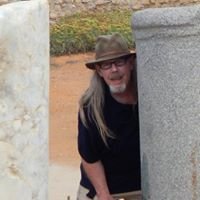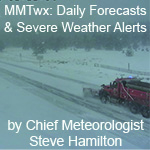- Posts: 9550
- Thank you received: 219
Coal Creek Canyon Flood
- MountainTownAlerts
-
 Topic Author
Topic Author
- Mountain Legend
-

At approximately 3:30 AM the Jefferson County Sheriff's Office sent out a CodeRed notification. You can listen the audio of the alert via the widget on the left of this blog page or by clicking on this link: http://widget.coderedweb.com/AlertSingl ... DSlneA=%3D

Coal Creek Canyon Flood
The hard road closure on the west side of highway 72 has been pushed back to Skyline Drive.
There is also a hard road closure on Twin Spruce Road at Burland Road.
These two new closures have been implemented due to additional wash outs between those points and the intersection highway 72 and Coal Creek Canyon.
Residents in the area are now advised to 'shelter in place'. An additional CodeRed message will be sent to homes in the area advising them of the 'shelter in place' notification.
If you are in the area please follow the shelter in place notification. Emergency crews will be in the area going door to door to check on residents.
Stay tuned to read share shelter in place guidelines that we will share via this blog. http://jeffcosheriff.blogspot.com/2013/ ... flood.html
#CCCF #JCSO
https://www.facebook.com/JeffersonCountySheriff
https://twitter.com/jeffcosheriffco



(MMT: *If you haven't signed up for CodeRED emergency alert notifications, please go to http://www.coderedweb.com and do so now - it's quick and easy!)
Please Log in or Create an account to join the conversation.
- MountainTownAlerts
-
 Topic Author
Topic Author
- Mountain Legend
-

- Posts: 9550
- Thank you received: 219
Text from CodeRED alert just sent: Signup Now at CodeREdweb.com
"This is Jefferson County Sheriff’s Office If you live in the area of the 25000 block of Highway 72 to the 31528 Block of Highway 72 and the area of 10600 block of Twin Spruce Rd to the 11262 block of Twin Spruce road please listen carefully. Stay in your home unless there is an emergency. Emergency Personal is attempting to go door to door to check your safety. The roads that are closed in your area are Highway 72 between Highway 93 to Skyline Dr and Twin Spruce road between Highway 72 to Burland road. If you have an emergency or need any assistance please call 9 1 1."
http://widget.coderedweb.com/AlertSingl ... DSlneA=%3D
Please Log in or Create an account to join the conversation.
- MountainTownAlerts
-
 Topic Author
Topic Author
- Mountain Legend
-

- Posts: 9550
- Thank you received: 219
Shelter in Place Guidelines
A shelter in place notification has been sent to residents in the area of the Coal Creak Canyon Flood.
The following guidelines are provided to aid you as you shelter in place. This information and more can be found in our emergency preparedness guide.
Basic shelter-in-place is accomplished by going indoors, closing windows and doors, turning off your heating and air conditioning system, and monitoring the TV and radio for additional guidance. For further information on sheltering-in-place, visit http://www.Ready.gov .
Follow the Police or Sheriff’s Office recommended evacuation routes. DO NOT TAKE SHORTCUTS. They may be blocked. Be alert for washed-out roads and bridges. Do not drive into flooded areas. Stay away from downed power lines.
Disaster situations can be intense, stressful and confusing. Should an evacuation be necessary, our local authorities will do their best to notify the public. Do not depend solely on this, however. In the absence of evacuation instructions from local authorities, you should evacuate if you feel you and your household are threatened or endangered. Use pre-designated evacuation routes and let others know what you are doing and your destination.
Taking shelter is often a critical element in protecting yourself and your household in times of disaster. Sheltering can take several forms. In-place sheltering is appropriate when conditions require seeking protection in your home, place of employment, or other location where you are located when disaster strikes. In-place sheltering may be short-term, such as going to a safe room for a fairly short period of time. Or it may be longer-term, as when you stay in your home for several days without electricity or water following a storm.
WEATHER ALERTS
The most comprehensive weather information is obtained by listening to a NOAA Weather Radio. Weather Radio is operated by National Weather Service offices across the country and broadcasts frequently updated recordings containing current high climatological data. During threatening weather, live broadcasts issue warnings for winds, large hail, tornadoes, flash floods and winter storms. You can purchase a tone-alert NOAA Weather Radio at many local electronic stores.
NOAA Weather Radio Stations in Colorado
Colorado Springs 162.475 MHz
Denver 162.550 MHz
Longmont 162.475 MHz
FLOODS
Floods are one of the most common hazards in the United States. However, all floods are not alike. Riverine floods develop slowly, sometimes over a period of days. Flash floods can develop quickly, sometimes in just a few minutes, without any visible signs of rain. Flash floods also often have a dangerous wall of roaring water that carries a deadly cargo of rocks, mud and other debris, which can sweep away many things in its path. Overland flooding occurs outside a defined river or stream, such as when a levee or dam is breached. Flooding can also occur from a dam break producing effects similar to flash floods.
Be aware of flood hazards no matter where you live, but especially if you live in a low-lying area, near water or downstream from a dam. Even very small streams, gullies, creeks, culverts, dry streambeds or low-lying grounds that appear harmless in dry weather can flood.
What to Do in a Heavy Rainfall
Stay away from stream beds. Natural stream beds, gullies and other drainage channels are not safe during and after rainstorms. Water runs off higher elevations very rapidly. One minute a creek bed is dry, the next minute flood water, rocks, mud, trees and other debris are raging down the hill.
Use your map. Know where you are, and whether you are on low ground, or below a dam. You don’t have to be at the bottom of a hill to be a target for the dangers of flash flooding.
Move to higher ground. Many roads and trails parallel existing drainage patterns, and may be swept away by flood waters. Stay out of these low-lying areas when there is a possibility of flash flooding.
Never attempt to outrun a flood on foot or in your vehicle. You can’t out run or out drive a flood. Stop the car, get out and climb to safety. If you are in a canyon, try to climb directly up the hillside.
Never try to drive through flooded areas. Twelve inches of water will float most vehicles. Flood water can rise up quickly and sweep your vehicle away. If an area is flooded, take an alternate route. Chances are you won’t be able to see how deep the water is, the strength of the current or the condition of the road underneath. Many people have died trying to drive through flooded areas.
Abandon stalled vehicles in flooded areas. If your vehicle stalls in flood water, get out and climb higher as soon as possible—before the water picks up speed and you can’t get out at all.
Before a Flood
1. Know these National Weather Service terms:
w Flash Flood Watch means that heavy rains are occurring or may occur—and may cause flash flooding in certain areas. Be alert. A pending flood may require immediate action.
w Flash Flood Warning means that flash flooding is occurring or imminent on certain streams or designated areas. If you live in the warning area you should act immediately.
w Small Stream and Urban Flood Advisory is issued when minor flooding is occurring or expected. In periods of heavy rain, be prepared to protect yourself against the possibility of flash flooding. If you see any possibility of a flash flood where you are, move immediately to a safer location (don’t wait for instructions to move). Notify local authorities of the danger so other people can be warned, especially during periods of heavy rainfall thunderstorms. For additional information, contact the Jefferson County Emergency Management Office at (303) 271-4900
2. Ask local officials whether your property is in a flood-prone or high-risk area. (Remember that floods often occur outside high-risk areas.) Also ask how you can protect your home from flooding.
3. Identify dams in your area and determine whether they pose a hazard to you.
During a Flood
1. Be aware of possible flash flooding hazards. If there is any possibility of a flash flood, move immediately to higher ground. Do not wait for instructions to move.
2. Listen to radio or television stations for local information.
3. Be aware of streams, drainage channels, canyons or other areas known to flood suddenly. Flash floods can occur in these areas without such typical warning signs as rain clouds or heavy rain.
4. If local authorities issue a flood watch, prepare to evacuate.
w Secure your home. If you have time, tie down or bring outdoor equipment and lawn furniture inside. Move essential items to the upper floors.
w If instructed, turn off utilities at the main switches or valves. Disconnect electrical appliances. Do not touch electrical equipment if you are wet or standing in water.
w Fill bathtubs with water in case water becomes contaminated or services cut off. Before filling the tub, sterilize it with a diluted bleach solution.
5. Do not walk through moving water. Six inches of moving water can knock you off your feet. If you must walk in a flooded area, walk where the water is not moving. Use a stick to check the firmness of the ground in front of you
6. Do not drive into flooded areas. Six inches of water will reach the bottom of most passenger cars causing loss of control and possible stalling. A foot of water will float many vehicles. Two feet of water will wash away almost all vehicles. If floodwaters rise around your car, abandon the car and move to higher ground, if you can do so safely. You and your vehicle can be quickly swept away as floodwaters rise.
After a Flood
1. Avoid floodwaters. The water may be
contaminated by oil, gasoline or raw sewage.
The water may also be electrically charged
from underground or downed power lines.
2. Avoid moving water. Moving water only six inches deep can sweep you off your feet.
3. Be aware of areas where floodwaters have receded. Roads may have weakened and collapse under the weight of a car.
4. Stay away from downed power lines and report them to the power company.
5. Stay away from designated disaster areas unless authorities ask for volunteers.
6. Return home only when authorities indicate it is safe. Stay out of buildings if surrounded by floodwaters. Use extreme caution when entering buildings. There may be hidden damage, particularly in foundations.
Please Log in or Create an account to join the conversation.
- MountainTownAlerts
-
 Topic Author
Topic Author
- Mountain Legend
-

- Posts: 9550
- Thank you received: 219
Visit http://Smart911.com to register your #JCSO profile to aid dispatchers if you have special needs. #CCCF @Smart911
Please Log in or Create an account to join the conversation.
- Reverend Revelant
-

- Mountain Legend
-

- Posts: 7163
- Thank you received: 21
Waiting for Armageddon since 33 AD
Please Log in or Create an account to join the conversation.
- MountainTownAlerts
-
 Topic Author
Topic Author
- Mountain Legend
-

- Posts: 9550
- Thank you received: 219
#CCCF Google Map: http://goo.gl/maps/6Elc9 View more information at http://jeffcosheriff.blogspot.com #JCSO #JEFFCO

Please Log in or Create an account to join the conversation.
- MountainTownAlerts
-
 Topic Author
Topic Author
- Mountain Legend
-

- Posts: 9550
- Thank you received: 219
Highway 72 is completely washed out in an area between Plainview Road and Twin Spruce Road. There are hard road closures at highway 72 (Coal Creek Canyon Road) and highway 93 and at highway 72 and Twin Spruce Road. Highway 93 remains open at this time. We will provide an updated google map here shortly.
Please exercise great care and judgement as you drive alternative routes. Do not drive into standing water. When in doubt, turn around and seek higher ground.
Additional road wash outs have occurred on side streets within Coal Creek Canyon as well. Jefferson County Road and Bridge is currently assessing roadways and making the appropriate closures and/or repairs.
The Flash Flood Warning for the area has expired however a Flash Flood Watch has been issued with an additional 1-2 inches of rain forecast in the next 24 hours.
Excel Energy has shut down natural gas lines in the area.
Agencies on scene include the Jefferson County Sheriff's Office, Colorado Department of Transportation, Colorado State Patrol, Coal Creek Canyon Fire and Jefferson County Road & Bridge.
Stay tuned to the Jefferson County Sheriff's Office Twitter page to receive the most recent updates: @JeffcoSheriffCO #CCCF
Please Log in or Create an account to join the conversation.
- MountainTownAlerts
-
 Topic Author
Topic Author
- Mountain Legend
-

- Posts: 9550
- Thank you received: 219
There is currently 2-4 inches of water flowing over highway 93 south of highway 72. This is due to the shear volume of water flowing down from Coal Creek Canyon. The road is currently open but drivers are directed to slow down as they travel through the area.
Homes are now threatened by water in the area of Quaker and Leyden Rock Drive. The Leyden Creek is overflowing its banks putting the homes in the area at risk.
Water is flowing over 82nd ave east of 93 and is washing out portions of the road and is largely impassable.
In the area of S. Golden road, a vehicle was washed into Luna Gulch. The vehicle is currently pushing up against a bridge located between Mt. Vernon Road and Nile Street. S. Golden road is closed between those two intersections.
Water is flowing over the road in the area of 96th and Indiana. The area is reported as passable at this time but please continue to exercise caution if you chose to drive through the area.
Stay tuned to this blog and our twitter feed for additional information.
Please Log in or Create an account to join the conversation.





